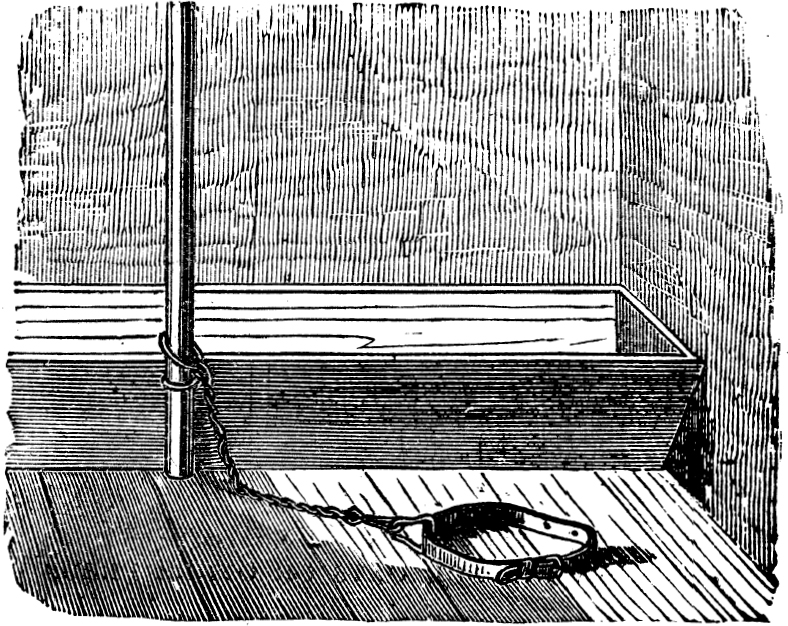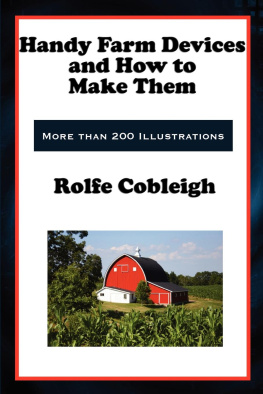Copyright 2014 by Skyhorse Publishing, Inc.
All Rights Reserved. No part of this book may be reproduced in any manner without the express written consent of the publisher, except in the case of brief excerpts in critical reviews or articles. All inquiries should be addressed to Skyhorse Publishing, 307 West 36th Street, 11th Floor, New York, NY 10018.
Skyhorse Publishing books may be purchased in bulk at special discounts for sales promotion, corporate gifts, fund-raising, or educational purposes. Special editions can also be created to specifications. For details, contact the Special Sales Department, Skyhorse Publishing, 307 West 36th Street, 11th Floor, New York, NY 10018 or info@skyhorsepublishing.com.
Skyhorse and Skyhorse Publishing are registered trademarks of Skyhorse Publishing, Inc., a Delaware corporation.
Visit our website at www.skyhorsepublishing.com.
10 9 8 7 6 5 4 3 2 1
Library of Congress Cataloging-in-Publication Data is available of file.
Printed in the United States of America
Contents.
I.
Farm Conveniences
FARM CONVENIENCES.

A CONVENIENT BIN FOR OATS.
T HE usual receptacle for oats, corn, or mill feed, or other grain for domestic animals, is a common bin or box about four feet in height. It is difficult to get the grain out of such a place when the quantity is half or more exhausted. To obviate this inconvenience, there may be affixed, about one foot from the bottom on one side of the bin, a board, ( B ) . This is nailed so as to project into the bin at an angle sufficient to allow the filling of a measure between the lower edge of board B and top edge of the opening at M . The opposite lower side of the bin is covered with boards, as indicated by the dotted line at R , for the purpose of placing the contents within easy reach. The top can be completed with hinged cover as well as the delivery space. By using a bin of this form, the last bushel is as easily removed as the first one.

Fig. 1. A BIN FOR OATS OR OTHER FEED .

FASTENINGS FOR COWS.
Although stanchions are really the safest fastening for cows, yet some persons object to them because the animals are held in a too confined position, and one which is supposed to be painful, or otherwise objectionable to the cows. Most owners of valuable cows consider safety to be the first requisite in their management, and the question as to what the cow would like as of minor importance. Stanchions have the valuable recommendation that one always finds his cows in the morning just where they were left at night, if they have been properly secured. Nevertheless, for those who dislike stanchions, there are other safe ways of fastening cows. For some years we used the method shown in . In the first a strong smooth pole was inserted through the floor and stepped into the beam beneath and into the floor above. It was also fastened by an iron strap bolted through the front of the trough. A steel ring to which a steel chain was attached was made to slide up and down upon the post, and a leather neck strap, or, in some cases, a leather head stall, was attached to the chain by a suitable ring or loop. The ring could not fall so low as the floor, being held by the edge of the feed-trough, and the cows feet could not, therefore, be entangled in the chain by getting over it. This is the chief danger in the use of neck straps and chains, but it may be avoided in this way. Another plan is to have an iron rod bolted to the feed-trough, upon which the ring may slide. This is equally secure, and gives more room for movement to the cow. With these ring-ties it is best to have short stalls to prevent the cows interfering with each other, else one of them may step on to another as it is lying down. The teats are sometimes injured even when stanchions are used, but the danger of this is greater with chain ties.

Fig. 2. FASTENING BY SLIDING RING ON A POLB

Fig. 3. FASTENING ATTACHED TO FEED-TROUGH .

MOVABLE NESTS FOR HENS.
Hens, as a general thing, are remarkably self-willed and obstinate. Perhaps an exception may be made as regards the Brahmas, which are very docile and easily managed. On account of this general peculiarity of fowls, many people who possess a somewhat similar disposition, find no success in keeping them. Their hens will not lay in the nests provided for them, or after sitting a few days upon a nest of eggs, leave them and never return. The consequences are, either no eggs at all, or nests hidden where they cannot be reached; no chickens, and time and labor lost. This may all be avoided if the owners will only study the habits and instincts of their poultry reasonably. One of the most inveterate habits of hens is that of hiding their nests, or seeking them in retired, shaded places. Those who would have plenty of eggs must make their arrangements accordingly. A very cheap and convenient nest is shown in . It is made of pieces of board eighteen inches long, nailed endwise to three-sided cleats at the top and bottom. The box need not be more than eighteen or twenty inches in length. Some corner pieces are nailed at the front to make it firm, and the back should be closed. These nests may be placed in secluded corners, behind sheds, or beneath bushes in the back yard, or behind a barrel or a bundle of straw. The nest egg should be of glass or porcelain, and every evening the eggs that have been laid during the day should be removed. A little cut straw mixed with clean earth or sand, will make the best material for the nest. This should be renewed occasionally, for the sake of cleanliness. When a hen has taken possession of one of these nests, it may be removed at night to the hatching-house, without disturbing her. Before the nests are used, they should be thoroughly well lime-washed around the joints, to keep away lice.

Fig. 4. A MOVABLE HENS NEST .

HOW TO GET RID OF STRAW.
Many farmers in the West, and some in what we call the East, are troubled as to what they shall do with the piles of straw which lie about their fields. Upon the same farms with these nearly useless straw piles, many head of stock are kept, and many more might be kept, which could be made useful in reducing the straw to a condition in which it would serve as manure. If the already urgent necessity for manure upon the western and southern fields were realized, there would be little hesitation in taking measures to remove the difficulty. The chief obstacle is, that these involve either personal or hired labor; the first is objectionable to many, and the second cannot be had for want of the money necessary to pay for it. The least laborious method of using this straw and making it serve the double purpose of a shelter for stock and a fertilizer for the field upon which it has been grown, is as follows: Some poles are set in the ground, and rails or other poles are laid upon them so as to form a sloping roof. This is made near or around the place chosen for thrashing the grain. The straw from the thrashing-machine is heaped upon the rails, making a long stack, which forms three sides of a square, with the open side towards the south, and leaving a space beneath it in which cattle may be sheltered from storms. In this enclosure some rough troughs or racks may be placed, from which to feed corn. Here the cattle will feed and lie, or will lie at nights under shelter, while feeding during the day upon corn in the field. As the straw that is given them becomes trampled and mixed with the droppings, a further supply is thrown down from the stack. The accumulation may be removed and spread upon the field to be plowed in when it is so required, and the stakes pulled up and carried to another place, where they may be needed for the same purpose. Such a shelter as this would be very serviceable for the purpose of making manure, even where straw is scarce, as in parts of the Southern States. There pine boughs may be made to serve as a covering, and leaves, pine straw, dry pond muck, swamp muck, trash from cotton fields, corn stalks, or pea vines, and any other such materials may be gathered and thrown from time to time beneath the cattle. Cotton-seed meal, straw, and coarse hay would keep stock in excellent order, and although there may be little snow or ice during the winter months in those States, yet the animals will be very much better for even this rude but comfortable shelter. In many other places such a temporary arrangement will be found useful in saving the hauling of straw, stalks, or hay from distant fields, and the carting of manure back again to them. It will be found vastly easier to keep a few young cattle in such a field, and go thither daily to attend to them during the winter when work is not pressing, than to haul many loads of hay or straw to the barn at harvest time, or many loads of manure in the busy weeks of spring.



















